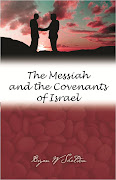
Christianity Considered 1. (Part 3)
What about the Bible?
In the last blog we raised the question, 'are the biographies of Jesus reliable' and considered John's gospel, which contained the record of an eye-witness. This time we will examine Luke's biography, who obtained his material from those personally involved with Jesus.
The biography written by Luke
It is widely accepted that Luke was an educated Greek, and a doctor by profession. He wrote two books; the first giving a history of the life of Jesus of Nazareth from His birth to His death and resurrection; the second describes many of the events experienced by the early church during the first thirty years of its existence. The two books together, his gospel and the Acts of the Apostles, account for some forty percent of the New Testament. The value of his contribution to the canon of Scripture cannot be over-estimated.
Luke, begins his gospel, by claiming that because of the information and knowledge that he had at his fingertips, (as a result of contacts and relationships), he was well suited to write a biography of the Messiah. He said, “Inasmuch as many have taken in hand to set in order a narrative of those things which have been fulfilled among us, just as those who from the beginning were eyewitnesses and ministers of the word delivered them to us, it seemed good to me also, having had perfect understanding of all things from the very first, to write to you an orderly account, most excellent Theophilus, that you may know the certainty of those things in which you were instructed.” (Luke 1:1-4)
Luke's record as an historian
Since Luke’s contribution to the New Testament is substantially that of an historian, we can narrow our question a little further. In this specialist field what is his reputation? The answer is, that his ability as an historian has been amply documented. There are numerous instances where he refers to rulers and historical events in his two books. These can be, and have been, tested from other sources. Invariably they have been found to be accurate. Examples include:
(i) a reference to Philippian rulers as ‘praetors’,
(ii) his choice of the word ‘proconsul’ as the title for Gallio in Corinth (Acts 18.12),
(iii) his describing of Publius as ‘the leading man of the island’ in Malta (Acts 28.7), and
(iv) his use of ‘politarchs’ to denote the civil authorities of Thessalonica. (Acts 17.8)
(ii) his choice of the word ‘proconsul’ as the title for Gallio in Corinth (Acts 18.12),
(iii) his describing of Publius as ‘the leading man of the island’ in Malta (Acts 28.7), and
(iv) his use of ‘politarchs’ to denote the civil authorities of Thessalonica. (Acts 17.8)
He gets no less than fifteen Roman governor titles right. His accuracy extends in other directions also. For example, the description of his sea voyage with Paul to Rome, and their shipwreck on Malta, in Acts 27, has been called "one of the most instructive documents for the knowledge of ancient seamanship" that we possess (Holtzmann).
Sir William Ramsay, Professor of Classical Art and Architecture at Oxford University, an eminent archaeologist and holder of numerous doctorates said, the account of the voyage as a whole is commonly accepted by critics as the most trustworthy part of Acts”.
The distinguished Roman historian A. N. Sherwin-White said of Acts: “Any attempt to reject its basic historicity, even in matters of detail, must now appear absurd.” The historical accuracy demonstrated in the Acts of the Apostles has been widely accepted, but the question remains, can we be as confident about his record of the life of Jesus? F. F. Bruce, a highly respected Classical and New Testament scholar, can answer this query for us. “A man whose accuracy can be demonstrated in matters where we are able to test it is likely to be accurate even where the means for testing him are not available. Accuracy is a habit of mind...Luke's record entitles him to be regarded as a writer of habitual accuracy.” In other words, Luke’s biography of Jesus can be trusted.




